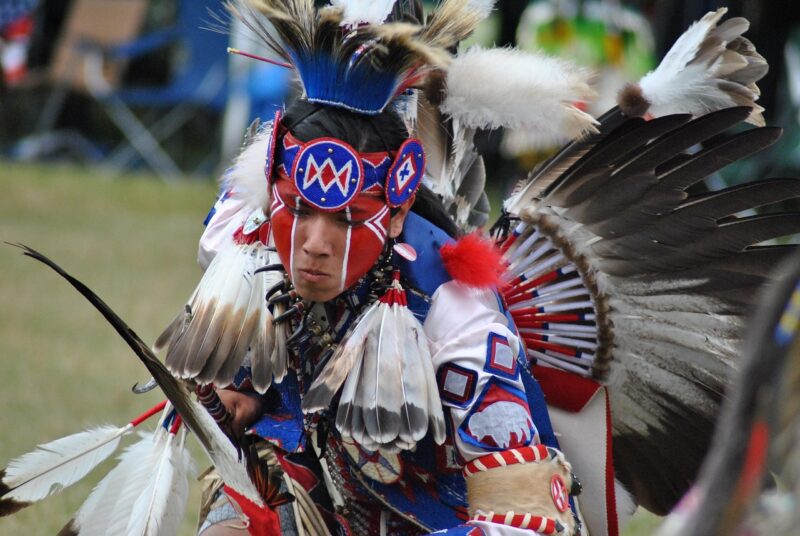
Pocahontas is one of the most famous figures in American history, but her story is often oversimplified and romanticized in popular culture. Born around 1596, she was a member of the Powhatan Confederacy, a group of Native American tribes in what is now Virginia. Her life intertwined with the early years of English colonization in North America, and her legacy continues to provoke interest and debate. In this article, we will provide a detailed examination of Pocahontas’s life, her interactions with the English settlers, and her impact on both her people and American history.
1. Pocahontas: The Early Years
Pocahontas was born as Amonute, the daughter of Powhatan, the paramount chief of over 30 Algonquin-speaking tribes. Growing up, she was likely raised in a culturally rich environment that intricately respected the traditions and beliefs of her people. Pocahontas’s childhood was marked by the complexities of tribal politics and the early encounters with European settlers.
Her nickname, meaning “little is a playful one,” reflects her lively character. As a girl, she was rumored to have been instrumental in the cultural exchange between the Powhatan people and the Jamestown settlers, who established their colony in Virginia in 1607. These exchanges were often of a tense and precarious nature, characterised by conflict and misconception, illustrating the struggles for power and resources that characterized early colonial interactions.
2. The Jamestown Settlement and First Contacts
The Jamestown settlement faced numerous challenges including starvation, disease, and conflicts with Native tribes. In the early years of the colony, the settlers depended heavily on the Powhatan tribes for supplies and food. It is during this tense interaction that Pocahontas became a crucial intermediary.
Although often referenced in stories as having saved John Smith from execution—an account he recounts in his writings—recent historians suggest that this narrative may be exaggerated or mischaracterized. Nevertheless, Pocahontas played a vital role in establishing relations between the Powhatan Confederacy and the Jamestown settlers, bringing food and resources to the struggling colonists on numerous occasions, often risking her safety in doing so.
3. Captivity and Conversion
In 1613, Pocahontas was captured by the English during a military action against her tribe. This marked a pivotal turn in her life, as she was held for ransom, and her people were coerced into negotiations with the English. During this time, she was introduced to Christianity, and in 1614, she was baptized and given the name Rebecca.
The conversion was part of a broader strategy by the English to demonstrate their authority and influence over the indigenous populations. Pocahontas’s captivity was an opportunity for the English to reshape her identity in a manner that suited their narrative and goals. Her subsequent marriage to John Rolfe, a tobacco planter, was also strategic, as it symbolized a tenuous peace between the settlers and the Powhatan people. This marriage was the first recorded union between an Englishman and a Native American and was celebrated as a sign of good relations between the two groups.
4. A Journey to England
In 1616, Pocahontas and John Rolfe traveled to England, where they were presented to English society as symbols of the New World and the potential for harmonious coexistence between Native Americans and Europeans. In England, she was celebrated and sought after by various social classes, embodying both mystique and allure, but she was also treated as an object, lacking agency in her story.
Her time in England was brief, but it provided an opportunity for her to witness the profound differences between cultures and to experience the complexities of the colonial empire—both the awe and the power dynamics at play. During her stay in England, she met high-profile figures and was a subject of fascination, but she also faced exclusion from the life she had known.
5. Legacy and Historical Impact
Tragically, Pocahontas died at the age of 21 from an unknown illness while preparing to return to Virginia with her family. Her legacy is complex, as reflected in the dual narratives that surround her life—one of a willing ambassador and peacemaker, the other of a victim of colonialism.
Pocahontas’s story has continuously been reinterpreted across centuries, shaping the narrative of Native American history and the impact of European colonization. She is often viewed through the lens of romanticism, particularly in contemporary media, which can overshadow the realities of her life and the experiences of indigenous peoples during colonization.
In academia, Pocahontas serves as a critical lens to explore themes of identity, agency, and the consequences of colonial encounters. Her life challenges us to reconsider the narratives that have been constructed about her, urging us to delve deeper into the complexities of indigenous history.
Conclusion
The real story of Pocahontas is much richer and more complicated than commonly portrayed. She was not just a bridge between two cultures; she was a human with her own desires, struggles, and agency. Understanding Pocahontas means acknowledging the significant impact she had on early American history and the broader story of Native American resilience in the face of colonization.
As we reflect on her life, let us strive to remember and honor the complexities and depth of historical narratives, bringing to light the ways in which these stories continue to shape our understanding of identity, power, and culture in America today.






